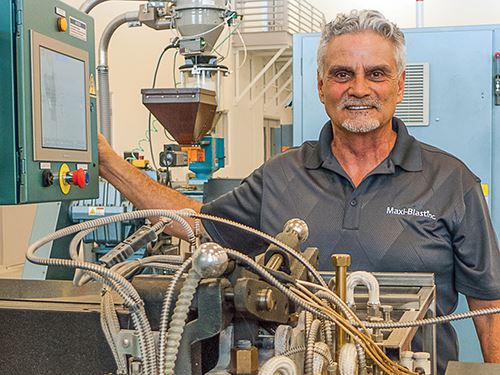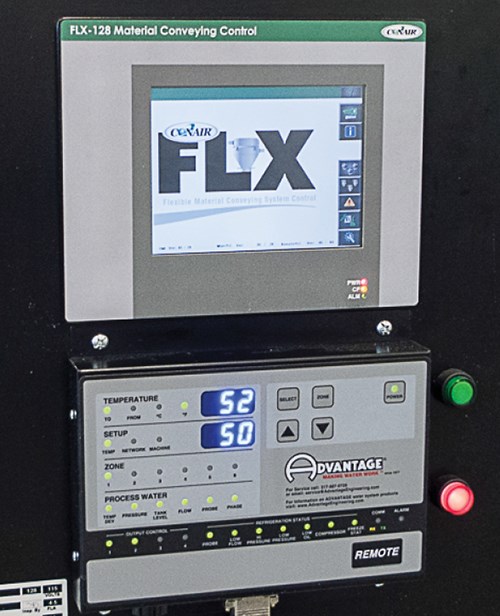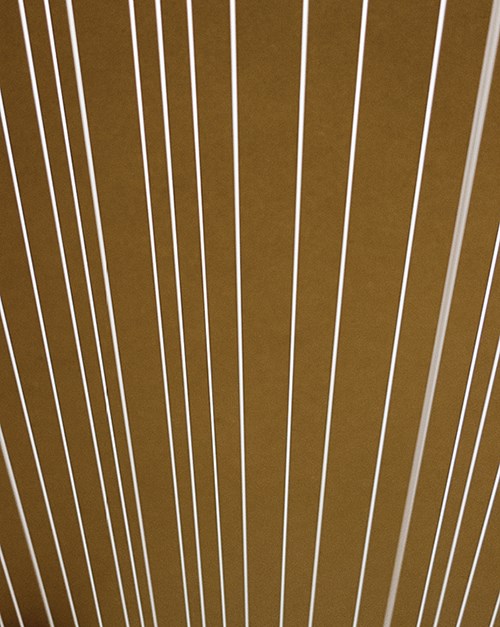Most processors might be familiar with the name Maxi-Blast for its extensive line of cabinets used to clean screws and molds and deflash parts. Perhaps less known is that the firm also makes the pellets for blasting media used in its cleaning equipment. Still less apparent is the meticulous approach it takes to the technology of extruding them.
Headquartered in South Bend, Ind., Maxi-Blast has been extruding and pelletizing a proprietary line of blasting media at a plant in St. Petersburg, Fla., for more than 30 years. Just a few months ago, it moved out of that 15,000 ft² facility to a brand-new 40,000 ft² plant designed from the ground up by company co-founder Robert Donaldson.
In fact, the only “old” piece of equipment the company brought from its previous facility—an eight-year-old, 36-mm twin-screw laboratory extruder built by
Entek Extruders—looks brand new. Maxi-Blast makes its own strand dies and proprietary downstream equipment. The company says it invested about $10 million in the expansion, which Donaldson referred to as “a going-away present” for second-generation family members next in line to run the business after he retires: daughters Annina, Shea, and Aja; and son Robert. At press time, the company was also in the process of building a tool room.
In Florida, Maxi-Blast runs primarily nylon 6 and polycarbonate pellets in an assortment of sizes, colors, and formulations that are shaped either irregularly, spherically, or cylindrically. Pellet shape and size play critical roles in molding and extrusion, and pellet geometry is also crucial when the material is used as a blasting medium, Donaldson points out. “Pellet size is extremely important and is tailored to the application,” he states. “Depending on what you are cleaning, you don’t want the pellet to be so small that it will lodge in a molded product and cause problems later on. We like to think we’ve perfected the pellet.”
Maxi-Blast’s blasting media and cabinets are used not only to clean screws and molds, but also, depending on the formulation, to deflash rubber, phenolic, and die-cast metal parts. Donaldson believes that Maxi-Blast is one of the few companies that furnish both cleaning/deflashing equipment and blasting media.
The move to a plant nearly three times the size of its prior one was necessary because Maxi-Blast’s business had simply outgrown its old plant. What’s more, the company is looking into expanding into business beyond blasting media—in particular, pellets formulated specially for the growing 3D printing business. At this time, the firm employees about 12 people on three shifts five days a week and has a production capacity of 5 million lb/yr.
“We’ve been looking for a new plant for two years,” says Donaldson. “We knew we wanted to stay in the area because we are a family company and we live here. Our employee base lives here and has been loyal, and we didn’t want to disrupt that. We also knew we wanted about 40,000 ft², but we couldn’t find anything that really suited our needs.
So Donaldson started with a clean sheet of paper, and the end result is a plant that doesn’t have a conduit line, plumbing pipe, or conveying tube in sight. “Since we started from scratch, we decided to run everything either underground or embedded in the precast concrete walls. At our old plant, we used to have dryers mounted on every extruder, equipment all over the place. Now, with our central drying and conveying system, we run all lines under the plant floor to minimize the distance material has to travel and to reduce the number of elbows.”
All electrical wiring and communications are embedded in the walls; in fact, the control panel for the Conair system is mounted right in the wall. Says Donaldson, “Every piece of equipment we have was customized. We now have just three 10-hp air pumps for the extruders, drying hoppers, and classifiers, for example, so we have fewer filters to change.”
In terms of equipment choices, Donaldson relies on long-term relationships and doesn’t even request quotes from other vendors. “We have a relationship with High-Technology, for example, that goes back decades. The fact that their equipment is so simple—the screen is the only moving part—means there is extremely low maintenance. They customized the downstream adapters for us and coordinated with Davis-Standard extremely well.”






















